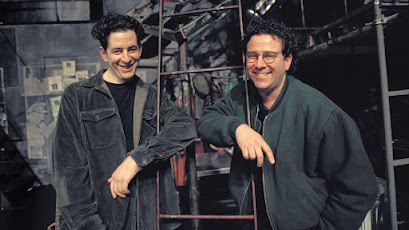Botanic Gardens -Singapore
What is ‘Nature’s Birdsong?’ Ethan Putterman on the Joys of Singapore’s Famous Botanic Gardens
Enjoying the July sunshine at Singapore’s famous Botanic Gardens, Ethan Putterman muses that few places in the world are so lovely in summertime. “It has everything,” says Putterman, a devoted lover of nature who even named a child, Walden, after Henry David Thoreau’s celebrated book of 1854.
“The orchids are lovely, and of every different shape and color! It’s why I raised my kids here. And it’s why children from all over Singapore and Asia visit together with their parents every summer and throughout the year. The warm weather allows it whatever the season.”
A twenty year resident of Singapore, Putterman muses that such stunning flora is the country’s hidden secret, “when people think of Singapore, the first thing that comes to mind isn’t flora or fauna but commerce, architecture and a great university.”
A former professor in the Department of Political Science at the National University of Singapore, specializing in political theory, Putterman knows the city better than most. “I’ve seen a lot of changes over the years, but a constant is the beauty of the Botanic Gardens and the MacRitchie Nature Preserve and Reservoir. Tourists see the first, but the second is a real hidden treasure.”
The crown jewel of the Botanic Gardens is the National Orchid Garden, which traces its roots all the way back to 1928. With orchids from all around the world, it is famous for creating new orchids, hybrids of every shape and amalgam of colors, as gifts to visiting dignitaries and celebrities to the island state. Everybody from Queen Elizabeth II to Mother Teresa and Bill Clinton had unique orchids named for them. All can be found blossoming throughout the sprawling flora even if they’re difficult to recognize after many years.
“I know a lot of couples who feel in love here, and one that got married, so it’s more than about just nature, but romance too,” said Putterman, sitting crosslegged with a book on his lap in the sunlight. Holding it up, it was Robert Lewis Stevenson’s childhood classic, ‘A Child’s Garden of Verses,’ a series of sixty four poems published in 1885.
“It’s the right book for the right place.” Reading one of his favorites, ‘Time To Rise,’ that he first heard his father read to him as a child, Putterman laughed, “I always found it amusing, back then and today. It’s an enduring classic even after a century and a half.”
‘A birdie with a yellow bill,
Hopped upon my window sill,
He cocked his shiny eye and said,
‘Ain’t you shamed, you sleepy-head.’
Another worthy book selection would be Thoreau’s Walden or Kenneth Grahame’s classic of 1908, Wind in the Willows. Grahame, who worked as a London banker, wrote Wind in the Willows during his spare hours and felt its presence in his life was essential to maintaining his sanity. His greatest book, often forgotten is the rather ho-hum existence of this celebrated early twentieth century British author.
Unlike Thoreau, a writer who relished nature and lived for two years in the woods outside of Concord, Massachusetts, at Walden Pond, Grahame was the perennial urbanite and Fleet Street sophisticate whom even his friends were surprised when he published Wind in the Willows. Different from Thoreau on the outside, aspects of his personality reveal an inner similitude and joie de vivre amidst the untamed vines, tangled branches and changing leaves of Autumn. Secreted away in the inner sanctum of the mind, grew a wild Eden free of all mundane, routine city life (and its pressures).
“Nature is a lifestyle or an escape, and both authors illustrate the dichotomy,” says Putterman, who refused to rule out the teaching of a children’s book. “It must be a course on literature or culture, of course,” rather than his specialty, political science. “Sometimes I feel like Grahame, myself, trapped inside of a bank, yearning for the joys of birdsong. Don’t we all?”
Yes we do. At least the weekend idlers to the sprawling landscape of Singapore’s greatest, curated natural spot. It is not without reason that visiting dignitaries far and wide are brought here first upon any visit to the Lion City -many even request it.
Free to the public, the Botanic Gardens, run by the National Parks Board, is open 5am-Midnight daily. Call ahead for the hours of the National Orchid Gardens. MacRitchie Reservoir is open 7am-7pm daily with the treetop walk open from 9am-5pm weekdays and 8:30am-5pm, Saturdays, Sundays and public holidays.


Comments
Post a Comment